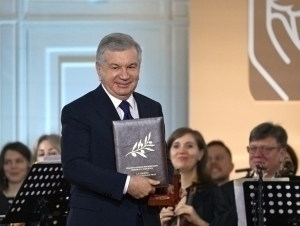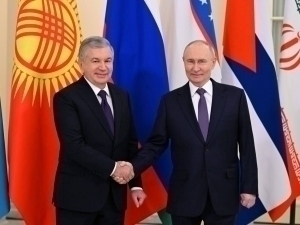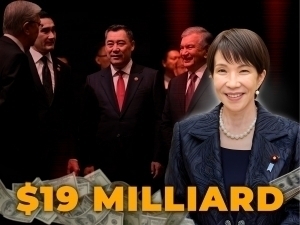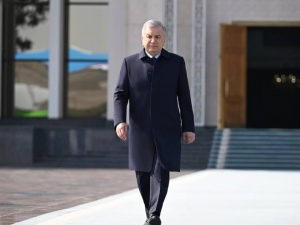Midweek: Vatican transitions, war warnings, and Pentagon missteps
Review
−
23 April 6620 7 minutes
Catholics Mourn the Loss of Pope Francis
On April 21, the Vatican announced the passing of Pope Francis, who died at the age of 88 in his residence. Just a day before his death, the Pope had addressed the faithful from the balcony of St. Peter’s Basilica, delivering an Easter message that appealed for peace in Ukraine and Gaza. Having faced a series of health challenges since early 2025, including two hospitalizations for pneumonia in February and long-term knee issues that confined him to a wheelchair, his death was attributed to a stroke that led to irreversible heart failure. His medical report also cited respiratory failure caused by bilateral pneumonia, multiple bronchiectases, hypertension, and type 2 diabetes.
Elected as Pope in 2013, Francis had survived previous serious conditions, including a 10-day hospitalization in 2021 for a colon narrowing, after which part of his colon was surgically removed. Despite his health, he continued to fulfill his papal duties, even returning home from the hospital just weeks before his death, which his doctor described as a “miracle.”
The Vatican has scheduled his funeral for April 26. True to his modest style, Francis requested that certain traditional rites be omitted. He will not be buried in the Vatican but in the Basilica of Santa Maria Maggiore in Rome. The event is expected to be attended by world leaders, including Donald Trump, Emmanuel Macron, and Luiz Inacio Lula da Silva. Notably, for Trump, this would mark his first official international trip since securing a second term in office.
With the papal seat now vacant, the Church prepares for a conclave to elect a new pope within 15–20 days. While technically any Catholic male may be considered, tradition holds that cardinals are typically chosen. La Stampa named Vatican Secretary of State Pietro Parolin as a strong contender. Other notable candidates include Ghanaian Peter Clarkson, Filipino Luis Tagle, and Hungarian Peter Erdő. Meanwhile, Argentina, the homeland of Pope Francis, declared a week of mourning, joined by Spain, Lebanon, and the United Kingdom, where flags were lowered to half-staff. Uzbek President Shavkat Mirziyoyev also expressed condolences to Catholics around the world.
Pentagon Secrets Become a Family Affair
Military secrecy appears to have taken a back seat under the current U.S. administration. In a striking incident, sensitive Pentagon matters were reportedly discussed not just with journalists but also within family circles.
The story first came to light on March 24 when The Atlantic’s editor-in-chief, Jeffrey Goldberg, revealed he had accidentally joined a Signal group chat with senior White House officials. The group discussed U.S. airstrikes on Houthi positions in Yemen, including timing and operational congratulatory messages. Participants included Defense Secretary Pete Hegseth, National Security Advisor Mike Waltz, and others. Goldberg had received the group chat link from an account purporting to be Mike Waltz. Although officials denied sharing classified information, the exposure sparked intense scrutiny.
A month later, The New York Times uncovered an even more concerning episode: Hegseth had shared detailed information about the Yemen airstrikes in a private Seagram app chat that included his wife (a former Fox News producer), brother, and personal attorney. This chat, named “Defense Team Huddler,” was created before Hegseth's official appointment and was run from his phone. It even included details such as the F/A-18 Hornet flight schedule. While Waltz was previously criticized, Hegseth’s actions have raised more serious concerns, as even his close circle had no official role requiring access to such information. Trust in Hegseth’s leadership has reportedly eroded among U.S. officials.
Peace Based on Hope, Not a Plan
On April 19, Russian President Vladimir Putin declared a ceasefire for Easter, to last until midnight on April 21. While intended as a gesture of goodwill, the truce failed almost immediately. Ukraine reported 59 shellings and five Russian offensives just by 6:00 a.m. on April 20. Later figures alleged that Russian forces had violated the truce 2,000 times.
Ukraine’s President Volodymyr Zelensky proposed extending the truce for another month, but Russia declined. Kremlin spokesman Dmitry Peskov stated that there were no plans to prolong the ceasefire. Both sides accused each other of violations. Russia claimed Ukraine breached the truce 4,900 times, more than double Ukraine’s estimate. Fighting resumed immediately after the ceasefire expired.
Despite the collapse of the Easter truce, there are signs of movement toward peace. Putin recently expressed willingness to sign an agreement forbidding attacks on civilian infrastructure and even opened the door to direct negotiations. Notably, he did not repeat his year-long claim that Zelensky lacks legitimacy. Peskov urged Ukraine to lift its ban on negotiations, which Zelensky instituted following Russia’s occupation of Ukrainian territory. While real progress remains elusive, Putin’s signals are viewed as cautiously positive.
2027: A Year of Concern for NATO
Experts warn of a looming conflict between Russia and NATO, potentially by 2027. Ed Arnold, a senior fellow at the Royal United Services Institute, cited the Suwalki Corridor as a probable flashpoint. He called on Germany to ramp up military readiness by acquiring more Leopard 2A8 tanks, TAURUS cruise missiles, and IRIS-T anti-aircraft systems.
The Institute for the Study of War (ISW) in the U.S. echoed these concerns, warning that the Kremlin is grooming the Russian public for long-term militarization. Propaganda once used against Ukraine is now being redirected toward the EU. On April 20, 2024, Foreign Minister Sergey Lavrov accused EU leaders of “reviving Nazism,” linking this claim to their call for a boycott of Russia’s Victory Day parade.
This pattern is familiar. In January 2024, President Putin described the Ukraine conflict as part of a larger “existential” battle against “modern Nazism,” extending the accusation to Baltic states and NATO. Experts warn this rhetoric could justify future aggression toward countries like Estonia, Finland, or Moldova.
EU leaders are taking these threats seriously. Estonia’s Foreign Affairs Chief Kaia Kallas warned of a possible Russian attack by 2028. Denmark’s military intelligence predicts a large-scale war in Europe within five years. NATO nations are preparing accordingly, updating maps and infrastructure in vulnerable areas such as Romania and Moldova.
The Suwalki Corridor—a 100-kilometer stretch connecting Belarus and Russia’s Kaliningrad exclave—is one of NATO’s most vulnerable regions. If compromised, it could isolate the Baltic states from the rest of the alliance. Poland, Lithuania, Latvia, Estonia, and Finland are even reconsidering their commitments under the Ottawa Convention, which bans anti-personnel mines. In December 2024, the EU allocated 170 million euros for border defense in these countries, and in March 2025, approved an €800 billion plan to modernize European armed forces.
China Enters the “Hell Weapon” Arms Race
China is escalating its military innovation. According to the South China Morning Post, Chinese scientists have developed a hydrogen bomb that does not rely on nuclear material. Produced by the 705th Research Institute of the China State Shipbuilding Corporation, this bomb uses magnesium hydride, which rapidly decomposes to release hydrogen gas. A 2-kilogram prototype produced a fireball over 1,000 degrees Celsius that burned for more than two seconds—much longer than conventional explosives like TNT.
The bomb’s power can be precisely controlled, making it useful for wide-area, evenly distributed destruction. But this is only one of several Chinese advancements this year. In January, China unveiled a submarine-launched drone that can operate both underwater and in the air. Its folding wings allow it to shift modes rapidly, giving it a significant advantage in reconnaissance and strike missions.
China’s push doesn’t end there. Scientists have also created a portable atomic clock, which could revolutionize battlefield coordination. These ultra-precise clocks synchronize radar operations, enabling the detection of stealth aircraft. With these innovations, China is not only matching the U.S. militarily—it’s becoming a formidable global force in defense technology.




